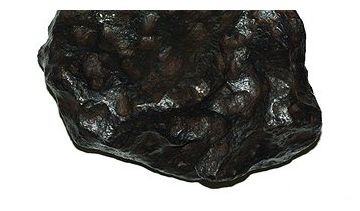OF THE
TIMES
Internet bloggers and Armageddon conspiracists are predicting the "end of days" event to happen between September 22 to 28.These theories have become so popular that NASA decided to come out and publicly address them...
One blogger has worryingly suggested US residents retain their firearms after suggesting that the controversial military operation Jade Helm taking place between July and September in several southern states is in preparation for predicted anarchy that could ensue as the asteroid nears the planet.
Meanwhile, many fringe religious groups and Biblical theorists are claiming the predicted impact will herald the beginning of the Rapture - a seven-year tribulation period.
A NASA spokesman said: "NASA knows of no asteroid or comet currently on a collision course with Earth, so the probability of a major collision is quite small.So NASA has spoken.
"In fact, as best as we can tell, no large object is likely to strike the Earth any time in the next several hundred years."

The smell that is being given off by this meteorite is hard to describe. When I first smelt it, I tried to think of the proper words to describe the odor. I tried to think of things that had a similar smell:And...
"like hot metal, or like a cast-iron skillet that has over-heated, or like the metal filaments when you first turn on an electric heater.
Also, a lot like when you make sparks by striking two flint-rocks against each other.
Maybe a little like ozone, but with a more smoky, sulfurous aroma."
That's when the phrase "burnt gunpowder" came into my mind.
Source: Meteorite Times
Chelyabinsk. Meteor SmellsIt's more likely space rocks coming into our atmosphere and the government owned media does not want the people to know they are about to be bombarded back to the Stone Age. What slimeballs.
A group of four observers of the Leonid meteor shower of 1833 reported a peculiar odour, "like sulphur or onions."
It was thought that "This apparent transmission of smells at the speed of light could be explained if they were due to nitrous oxide or ozone produced by an electric discharge." (Ozone [O3] a gas. From the Greek, ozein, for smell). Observers of the Texas fireball of 1 October 1917 also reported the odour of sulphur and burning powder as it passed.
A possible explanation is suggested by the following Chelyabinsk observer reports.
Field survey reports of smells were concentrated in the area surrounding the fireball trajectory. After an initial strong burst, the smells continued for a few hours. The eastern edge of this area coincides with the eastern edge of the glass damaged area. Arkhangel'skoe is the most western village where smells were reported. It is situated near the western edge of the glass damaged area. Fourteen villages reported similar smells, with nearly all described as a sulphur smell, a burning smell, or a smell similar to that of gunpowder.
These smells may have originated from the decomposition of Troilite (FeS), an iron sulphide mineral named after Domenico Troili, who first noted it in a meteorite that fell at Albareto, Modena, Italy in 1766. Troilite is one of the main components of the Chelyabinsk meteorite. Some burning smells may also have been caused locally when the shockwave dispersed soot from flues and stoves.
Respondents in Emanzhelinka, immediately under the fireball trajectory, also reported an ozone smell, similar to the smell after a thunderstorm. Ozone, with nitrogen oxides as by products, may have been produced in the immediate surroundings of the fireball by Ultra-Violet (UV-B λ= 290-320 nm wavelength) radiation from the meteor. This reinforces reports about sunburn caused by UV radiation from the fireball.
Source: Engineering and Technology Wiki
Comment: From January 5th of this year:
SOTT Exclusive: Huge asteroid filmed breaking up into hundreds of meteor fireballs over Southern Brazil